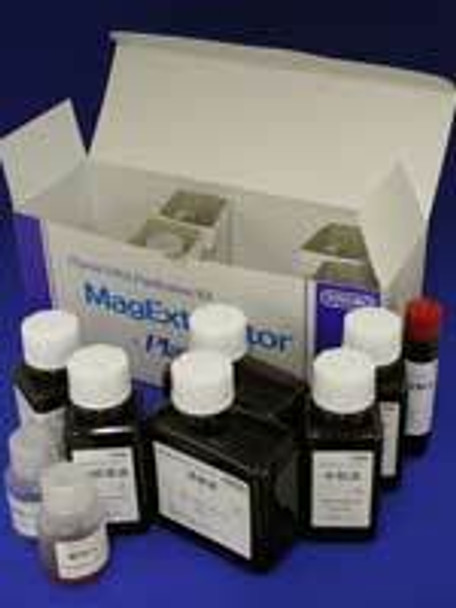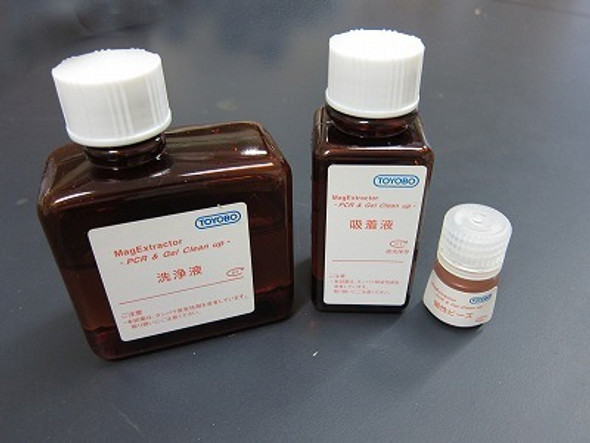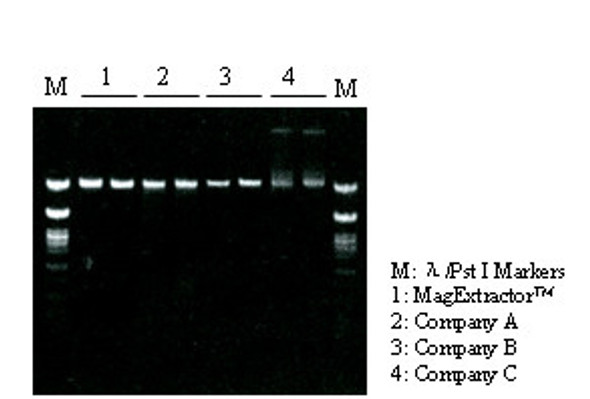Description
MagExtractor-Plasmid- is a magnetic silica bead-based kit for rapid, simple and reliable purification of plasmid DNA from E. coli cells. Requiring a suitable magnetic separation stand such as the Magical Trapper (TYB-MGS-101), it exploits the property of silica surfaces to bind DNA in the presence of chaotropic agents (reference 1). Purified plasmids can be used directly in automated fluorescent sequencing.
Features
- ~3-6 ug plasmid yield from E. coli carrying a high-copy plasmid
- Suitable for high throughput extraction of plasmid from E. coli cells
- 10â15-minute extraction time
- Purified plasmid can be directly utilized in sequencing, enzyme reactions, transformation, etc
- Does not contain hazardous substances, such as phenol or chloroform
Contents of kit (sufficient for 500 preparations)
- Binding Solution 130 ml x 2 (store at 4°C or room temperature)
- Magnetic Beads I 16 ml (store at 4°C or room temperature)
- Magnetic Beads II 16 ml (store at 4°C or room temperature)
- Suspension Solution 80 ml (store at 4°C)
- Lysis Solution I 80 ml (store at 4°C or room temperature)
- Lysis Solution II 20 ml (store at 4°C)
- Neutralization Solution 65 ml (store at 4°C or room temperature)
- Elution Solution 60 ml (store at 4°C)
- 5x Loading Dye 11 ml (store at 4°C)
Caution (Take appropriate laboratory safety measures and wear gloves when handling)
- Binding Solution contains chaotropic salt, an irritant.
- Lysis solution II contains NaOH.
- Suspension Solution contains RNase A.
Notes
- Magnetic Beads I are not necessary for manual use. [This reagent is used for extraction with the automated nucleic acid purification apparatus âMFX seriesâ]
- Lysis solution I and II should be mixed at a ratio of 4:1 prior to use. This solution can be stored at room temperature for 3 weeks.
- Precipitates formed in âLysis Solution Iâ at low temperature can be dissolved by heating at 40°C.
- Purified plasmid may contain small amounts of EtOH. Plasmid DNA solutions containing EtOH sink easily into agarose gel slots using 5x Loading Dye.
References
- B. Vogelstein and D. Gillespie, Proc. Natl. Acad. Sci. USA. 76: 615-619 (1979)






